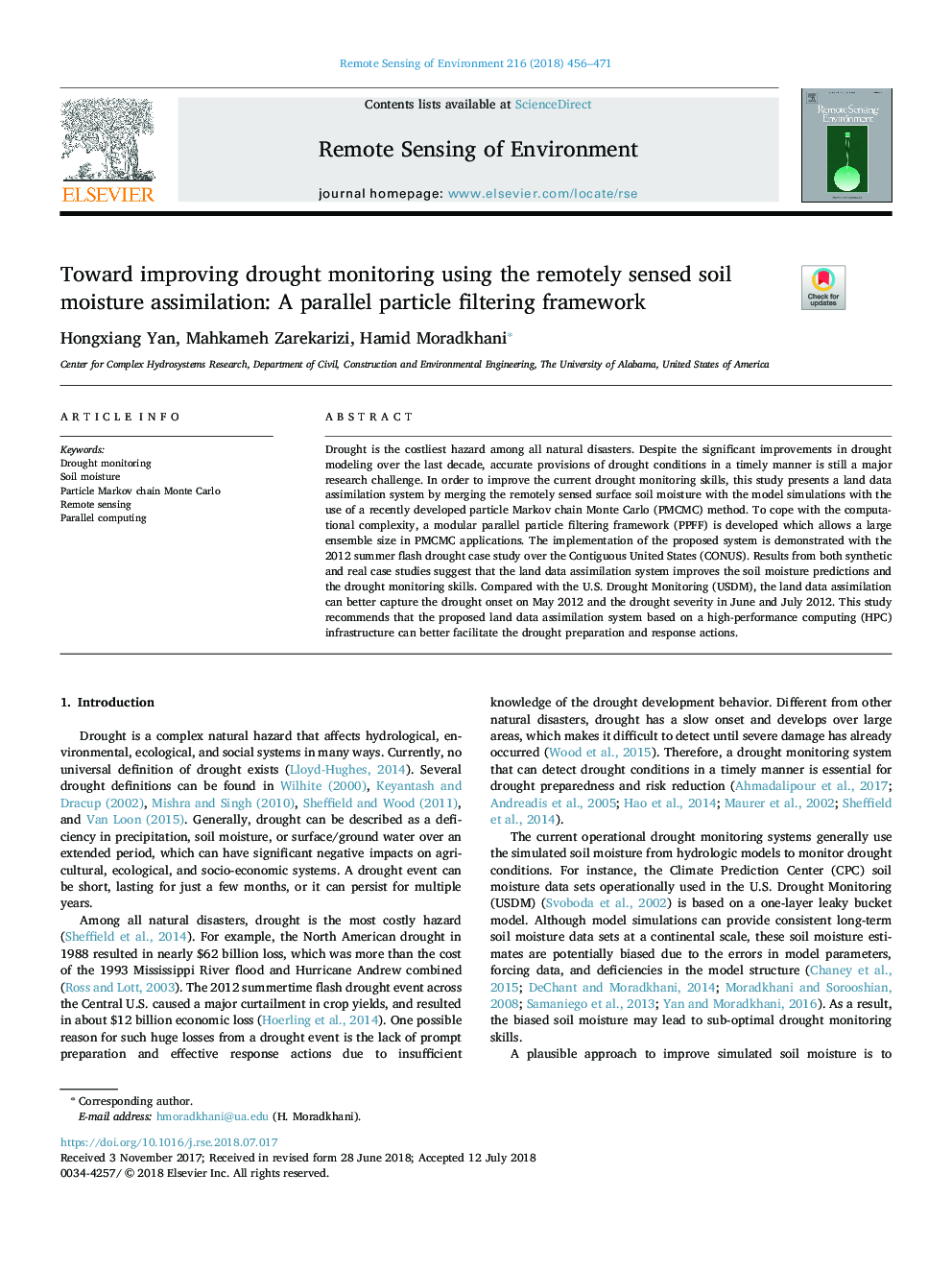| Article ID | Journal | Published Year | Pages | File Type |
|---|---|---|---|---|
| 8866429 | Remote Sensing of Environment | 2018 | 16 Pages |
Abstract
Drought is the costliest hazard among all natural disasters. Despite the significant improvements in drought modeling over the last decade, accurate provisions of drought conditions in a timely manner is still a major research challenge. In order to improve the current drought monitoring skills, this study presents a land data assimilation system by merging the remotely sensed surface soil moisture with the model simulations with the use of a recently developed particle Markov chain Monte Carlo (PMCMC) method. To cope with the computational complexity, a modular parallel particle filtering framework (PPFF) is developed which allows a large ensemble size in PMCMC applications. The implementation of the proposed system is demonstrated with the 2012 summer flash drought case study over the Contiguous United States (CONUS). Results from both synthetic and real case studies suggest that the land data assimilation system improves the soil moisture predictions and the drought monitoring skills. Compared with the U.S. Drought Monitoring (USDM), the land data assimilation can better capture the drought onset on May 2012 and the drought severity in June and July 2012. This study recommends that the proposed land data assimilation system based on a high-performance computing (HPC) infrastructure can better facilitate the drought preparation and response actions.
Keywords
Related Topics
Physical Sciences and Engineering
Earth and Planetary Sciences
Computers in Earth Sciences
Authors
Hongxiang Yan, Mahkameh Zarekarizi, Hamid Moradkhani,
